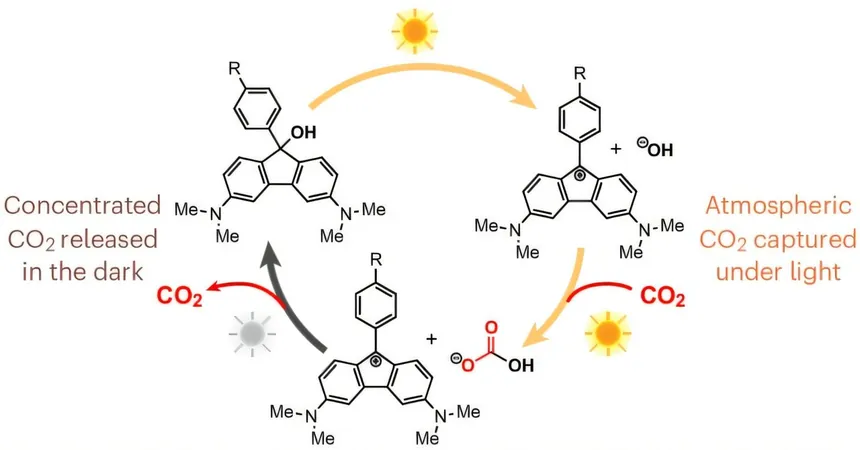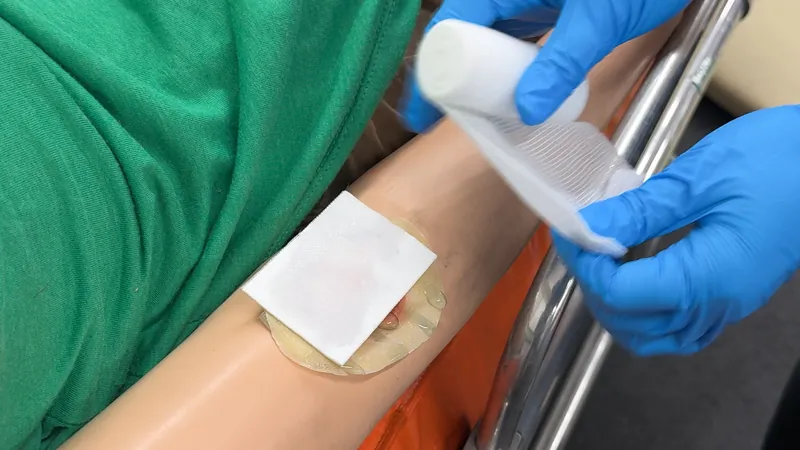
A Solar-Powered Revolution: Could This Breakthrough in Carbon Capture Save Our Planet?
2025-09-03
Author: Amelia
Harnessing Sunshine to Trap CO2
What if the solution to climate change was hiding in plain sight within organic molecules? Assistant Professor Richard Y. Liu is on a mission to explore this idea, leveraging the intricacies of organic chemistry to forge cleaner technologies and innovative materials that could help combat our planet’s most pressing issues.
In his groundbreaking new study published in *Nature Chemistry*, Liu unveils a remarkable advancement: solar-activated organic molecules, known as "photobases," that efficiently generate hydroxide ions to trap carbon dioxide (CO2) quickly and reversibly. This innovation represents a significant leap toward scalable, low-energy solutions for greenhouse gas removal, with Liu emphasizing the unique potential of using light as an energy source.
From Physics to Chemistry: A Journey of Discovery
Liu's fascination with organic chemistry began during his time at Harvard, where he initially ventured into physics. However, he quickly found his passion lay in the artistry of molecule creation in the lab. Guided by his mentor Ted Betley, Liu honed his skills in organic synthesis, crafting complex structures atom by atom.
Innovating for the Real World
Now at the helm of his own lab in the Department of Chemistry and Chemical Biology, Liu's research bridges organic, inorganic, and materials chemistry. His team is pioneering the development of organic materials for energy storage and catalysis while innovating ways to efficiently capture greenhouse gases.
Their recent breakthrough in direct air capture, achieved through collaboration with energy expert Daniel G. Nocera, showcases the lab's commitment to creating real-world solutions. "Direct air capture is among the most crucial emerging climate technologies, yet current methods rely on excessive energy consumption," Liu stated. "By designing molecules that leverage light to alter their chemical state and effectively trap CO2, we’re paving the way for a more efficient—potentially solar-powered—future."
An Interdisciplinary Approach to Science
Liu attributes much of this success to his diverse team of chemistry, materials science, and engineering experts, each bringing a unique specialization to the table. "While we all share a common language in organic synthesis, our varied expertise—from electrochemistry to computational modeling—allows us to generate innovative ideas at the intersections of these disciplines," he explained.
Inspiring the Next Generation of Scientists
Central to Liu’s work is his commitment to cultivating the next generation of scientists. He sees the research conducted in his lab as a launching pad for students to secure their Ph.D. and embark on promising careers in science. "Our projects serve as for students to create compelling theses that will catalyze their future endeavors," he added.
Navigating Funding Challenges
However, Liu warns that recent disruptions in federal funding could pose an existential threat. "The research carried out at universities ultimately benefits society," he asserted. "We are driven not by profit but by the desire to make our discoveries accessible for the greater good." As Liu and his team continue to push the boundaries of science, the hope is that innovative research like theirs will contribute significantly to addressing the climate crisis.









 Brasil (PT)
Brasil (PT)
 Canada (EN)
Canada (EN)
 Chile (ES)
Chile (ES)
 Česko (CS)
Česko (CS)
 대한민국 (KO)
대한민국 (KO)
 España (ES)
España (ES)
 France (FR)
France (FR)
 Hong Kong (EN)
Hong Kong (EN)
 Italia (IT)
Italia (IT)
 日本 (JA)
日本 (JA)
 Magyarország (HU)
Magyarország (HU)
 Norge (NO)
Norge (NO)
 Polska (PL)
Polska (PL)
 Schweiz (DE)
Schweiz (DE)
 Singapore (EN)
Singapore (EN)
 Sverige (SV)
Sverige (SV)
 Suomi (FI)
Suomi (FI)
 Türkiye (TR)
Türkiye (TR)
 الإمارات العربية المتحدة (AR)
الإمارات العربية المتحدة (AR)